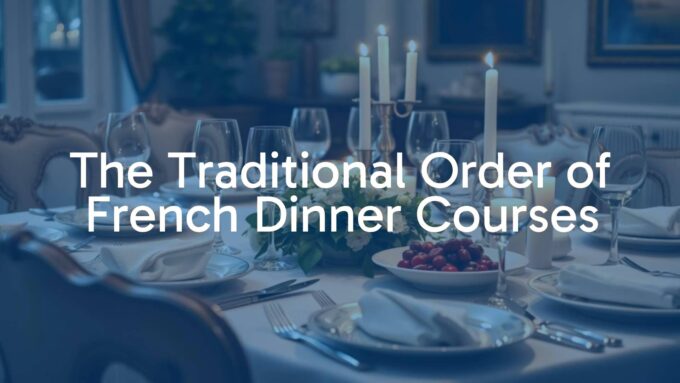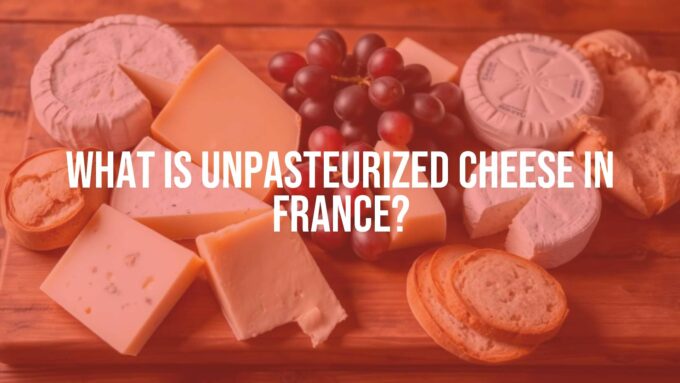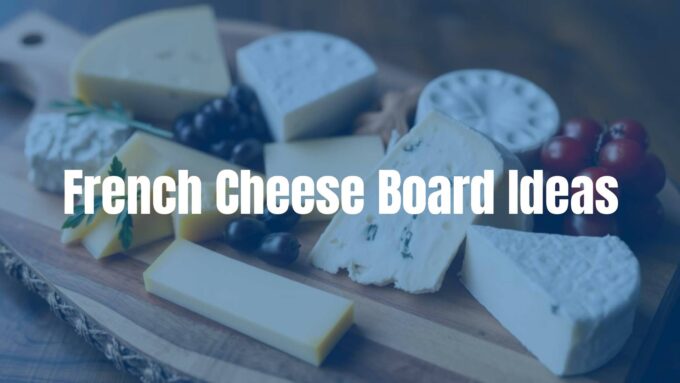A French cheese pairing chart acts as a helpful guide, showing you which French cheeses go well with certain wines and other accompaniments. This chart organizes the many options and suggests combinations that help you enjoy both the cheese and what you’re drinking. You can use it as a “cheat sheet” for building a well-balanced cheese platter or hosting a cheese night, making sure every bite and sip work well together.
Pairing cheese and wine has a long tradition in France, where some cheeses and wines even have special AOC status to indicate quality and how they’re made. This tradition means people put a lot of thought into what goes together, turning a simple snack into a special experience. A cheese pairing chart makes it easier for everyone, whether you’re just starting out or already enjoy French food, to try these pairings without feeling overwhelmed.

What Is a French Cheese Pairing Chart?
A French cheese pairing chart is a practical tool that shows you which wines and snacks go best with each type of cheese. Rather than randomly combining flavors, the chart helps you notice which partners-like certain wines, fruits, or breads-bring out the best in each cheese. With hundreds of French cheeses and thousands of wines, the possible match-ups can seem endless. The chart summarizes these options in a clear and simple way.
Usually, these charts sort cheeses by their texture, milk source, or strong/mild taste, and then suggest drinks or foods that go well with them. The charts might also recommend extras such as bread, nuts, or fruit to make a cheese board complete. While some people treat cheese pairing as a strict set of rules, it’s really about basic ideas-and then letting yourself try out and discover what you like best.
How Does a Cheese Pairing Chart Work?
A cheese pairing chart works by looking at flavors and textures that either match or balance each other. It encourages you to think about how the creaminess, saltiness, sourness, or smell of a cheese works with different drinks. For example, a soft, creamy cheese may need a wine with fresh acidity to balance its richness, while a very salty cheese often tastes good with a sweet wine. The aim is for both the cheese and the drink to taste better together than apart.
Charts also often point out that foods and drinks from the same area tend to go well together. This is called “terroir”-local conditions such as weather and soil shape both the cheese and wine, making them natural partners. For instance, goat cheese from the Loire Valley often matches nicely with a Loire Valley Sauvignon Blanc.

Why Use a Chart for French Cheeses and Wine?
A chart makes pairing French cheese and wine easier for several reasons. First, it clears up confusion, which is especially helpful since there are so many cheese and wine choices in France. With more than 40 AOC cheeses and over 300 different wines, the options can seem like a lot. A chart gives you a place to start and helps you avoid mistakes when matching foods and drinks.
Second, a chart helps you enjoy your tasting more. It guides your choices so you can taste a bigger range of flavors and appreciate what French food has to offer. The chart also makes it easier to plan for a cheese and wine party, helping you pick out a group of cheeses and drinks that most people will enjoy.
How to Choose French Cheeses for Pairing
Picking French cheeses to pair is fun because of the country’s wide range of flavors and textures. The trick is to choose different types, so everyone finds something they like and your cheese board is interesting. Try to include cheeses with different textures and milk types, and ones that are young and aged.
For example, choose at least one from these categories: soft cheese, semi-hard, and hard. Include both cow’s milk and goat’s milk cheeses if you can. This approach makes your board look better and gives you more flavors to try with different drinks. If you have questions, don’t hesitate to ask someone who sells cheese-they often know local and seasonal cheeses well.
Categories of French Cheese
French cheeses are grouped by how they feel, the type of outer rind, and how they’re made. Knowing these basic categories makes pairing easier:
- Fresh Cheeses: These are soft, not aged, often with a slight sourness. Examples: chèvre (goat cheese), Neufchâtel.
- Bloomy Rind Cheeses: Cheeses with a soft, white edible skin, creamy inside. Well-known types include Brie and Camembert. They are buttery and sometimes taste a bit like mushrooms.
- Washed Rind Cheeses: Cheeses washed with brine or alcohol for a sticky, orange-colored rind and strong smell. Examples: Époisses and Munster, known for deeper flavors.
- Semi-Hard and Hard Cheeses: These are firmer, often because they are pressed and aged longer. Examples: Morbier and Raclette (semi-hard), Comté, Emmental, Cantal (hard). Flavors may be nutty or savory.
- Blue Cheeses: Have blue-green lines from mold and strong, salty taste. Examples: Roquefort, Bleu d’Auvergne.

Popular French Cheeses and Their Flavor Profiles
Here is a closer look at some popular French cheeses:
- Brie de Meaux: Mild and creamy cow’s milk cheese, with a soft white rind and a scent that might remind you of mushrooms.
- Camembert: Made from cow’s milk, soft and a little earthy or mushroom-like in flavor.
- Roquefort: Strong, salty blue made from sheep’s milk, with a creamy, crumbly texture and sharp taste.
- Comté: Hard cheese from unpasteurized cow’s milk-fruity, nutty, and sometimes with crunchy bits.
- Valençay: Goat cheese with a pyramid shape, blue-grey rind, tangy and creamy.
- Époisses de Bourgogne: Very creamy cheese with a runny texture and a strong, salty flavor.
- Morbier: Semi-hard with a line of ash in the middle, tastes nutty and creamy.
- Reblochon: Unpasteurized cow’s milk cheese that is strong and creamy, with a rich aftertaste.
- Cantal: Hard cheese, nutty and varies in strength-good if you’re new to French hard cheeses.
- Ossau-Iraty: Firm sheep’s milk cheese, a little sweet and nutty, hints of caramel.
- Munster: Washed-rind with a soft texture and strong smell but milder taste than you might expect.
Choosing a mix from this list means everyone can try something new and enjoy many flavors.
Principles of Pairing French Cheese with Wine and Drinks
Matching French cheese with wine (or other drinks) isn’t about strict rules but about finding what tastes good together. The idea is that cheese and drink should bring out the best in each other, often by matching or balancing their flavors and feel in your mouth. Some combinations are well known in France, but don’t be afraid to test new pairings-personal taste matters most.
Pairing cheese and wine from the same area (“terroir”) is a classic choice and often works well, because both are typically made to match local tastes. Sometimes, very different tastes can also create pleasant surprises.
What Makes a Great French Cheese and Wine Match?
The best pairings feel balanced. Neither the cheese nor the wine overpowers the other. For example, wine with good acidity cleanses your mouth after creamy cheeses, letting you enjoy the next bite. If your cheese is light and soft, pair it with a gentle wine. If the cheese is strong and sharp, pick a wine with enough flavor to match. White wines, with their acidity, often pair well with cheese, but bold red wines go best with hearty, aged cheeses.
Balancing Aromas, Textures, and Intensity
Matching cheese and drinks involves considering smells, feel, and strength of both. Cheeses with earthy smells work with wines that have similar notes, while fruity wines can balance hearty cheeses. The bubbles in sparkling wine or Champagne are great after rich, creamy cheeses because they clean your palate. Strong and salty blue cheeses usually need a sweet wine for balance. When tasting, try eating a bit of cheese, clearing your mouth, and then sipping the wine-this helps you notice how the flavors come together without clashing.
Pairing French Cheeses Beyond Wine: Beer, Champagne, and Spirits
Wine isn’t the only drink for French cheese. Champagne, thanks to its acidity and fizz, matches many cheeses, especially soft cheeses like Brie and Comté. Beer also works: a light lager or fruity ale goes with mild cheeses, while darker beers can hold up to more intense, aged varieties. Non-alcoholic ciders from Normandy are a classic match with cheeses from that area, like Camembert. Even spirits like whisky can sometimes pair with cheese, but be careful-strong drinks can easily cover up the taste of softer cheeses.

French Cheese Pairing Chart: Guide by Cheese Type
It’s easier to pick a matching drink or side for cheese when you sort cheeses by type. Each category, from soft to strong, goes better with different drinks and foods. Here’s a basic guide:
Fresh Cheese Pairings (Chèvre, Neufchâtel)
Soft, young cheeses like chèvre and Neufchâtel are tangy, moist, and mild. They match well with light, crisp white wines such as Sauvignon Blanc-especially from the same area, like Loire Valley’s Sancerre or Pouilly Fumé. Sparkling wines like Crémant de Loire also go nicely, and a drizzle of light honey makes a good non-alcoholic pairing.
Bloomy Rind Cheese Pairings (Brie, Camembert)
Brie and Camembert have creamy centers and edible rinds. Pair a young Brie with Champagne or a crisp Chardonnay for a balanced taste; as Brie matures, a light red like Beaujolais or Pinot Noir can work. Camembert loves a fruity Chardonnay or a Normandy cider, as well as Champagne or red Burgundy. With these cheeses, simple crackers or mild bread help refresh the palate.
Washed Rind Cheese Pairings (Époisses, Munster)
Washed rind cheeses like Époisses and Munster have a strong smell and rich flavor. For Époisses, try a red Burgundy or a fruity Beaujolais. Champagne, especially a fruity rosé, also works well. Munster pairs nicely with Alsace white wines like Riesling or Pinot Gris. Serve these cheeses with plain bread or a baguette.
Semi-Hard and Hard Cheese Pairings (Comté, Emmental, Cantal, Beaufort, Reblochon, Tomme de Savoie, Raclette, Saint-Nectaire, Ossau-Iraty)
- Comté: Goes well with a dry Riesling, a Loire Valley Chenin Blanc, sweet Vouvray, or Blanc de Blancs Champagne.
- Emmental: Matches with light-bodied white wines or fruity reds.
- Cantal: Young Cantal pairs with Beaujolais, while older types can handle bolder reds like Bordeaux blends.
- Beaufort: Pairs nicely with a sweet Vouvray Chenin Blanc.
- Reblochon: Younger Reblochon is good with a dry white wine; older Reblochon fits with a full-bodied red like Châteauneuf-du-Pape.
- Tomme de Savoie: Try with Northern Rhône Viognier for a fruity balance.
- Raclette: Enjoy with Crozes-Hermitage white wine or Alsace Pinot Gris.
- Saint-Nectaire: Tastes good with Côtes d’Auvergne or Bordeaux red blends.
- Ossau-Iraty: Pairs with Sauternes or fresh fruit like figs and pears.
Blue Cheese Pairings (Roquefort, Bleu d’Auvergne)
Blue cheeses need sweet or fruity drinks. Roquefort’s saltiness goes perfectly with sweet white wines like Sauternes or similar options like Monbazillac. Bleu d’Auvergne, which is milder, matches well with spicy, fruity whites such as Viognier. If you enjoy experimenting, strong blues can even work with fortified wines like Port.
Recommended Pairings: Classic French Cheese and Wine Matches
Some French cheese and wine combinations are famous for a reason-they consistently taste great together, often because they’re from the same place or balance their flavors beautifully. Here are some classic pairings to try:
| Cheese | Classic Drink Pairing | Notes |
|---|---|---|
| Brie de Meaux | Champagne or Chardonnay | Champagne’s bubbles or a crisp white wine balance Brie’s rich creaminess. Fruity red is good for riper Brie. |
| Comté | Vin Jaune or Sauvignon Blanc | Vin Jaune’s nutty taste echoes Comté, while Sauvignon Blanc adds freshness. |
| Roquefort | Sauternes or other sweet white | Sweet wine balances Roquefort’s intense, salty flavor. |
| Camembert | Normandy cider or Pinot Noir | Cider reflects its home region; light reds also work well. |
| Goat Cheese | Sancerre or Sauvignon Blanc | Crisp, citrusy whites cut through the tanginess of fresh goat cheeses. |
Hosting a French Cheese and Wine Tasting
Hosting a French cheese and wine tasting is a fun way to try many flavors with friends. With so many possibilities, keep things simple. Pick a small number of cheeses and drinks, set them out clearly, and let everyone try at their own pace.
Tips for Presenting a Cheese Pairing Chart
- Pick a Range: Choose 3 to 5 cheeses of different types and strengths. For example: Comté (hard), Brie (soft), Roquefort (blue).
- Label Items: Place small signs near each cheese and wine with names, origin, and a short flavor note.
- Arrange in Order: Line up cheeses from the mildest to strongest, so guests aren’t overwhelmed at the start.
- Showcase Local Pairings: Put cheeses from one area next to matching local wines and explain the connection.
- Use Tasting Sheets: Give guests paper to jot down thoughts and favorites; this makes tasting more interactive.
- Let People Experiment: Suggest starting with the chart, but encourage guests to make their own discoveries. Taste always comes down to preference.
- Serve Cheeses at Room Temperature: Let cheeses sit out 30-60 minutes before serving so their flavor comes through.
Accompaniments: Breads, Fruits, and Nuts
While cheese is the focus, a few sides can make the experience better:
- Breads: Fresh baguettes or plain crackers are best. Avoid flavored breads, which can take over the taste.
- Fruits: Fresh grapes, figs, or pears add sweetness and a juicy contrast. Dried fruits like apricots or cherries work too.
- Nuts: Walnuts and almonds go well with many cheeses, adding a pleasing crunch.
- Sweet Spreads: Honey is nice with younger, fresher cheeses. Fruit jams match stronger, saltier cheeses.
- Savory Sides: Cornichons (tiny pickles) provide a tangy snap. If you want to offer meat, slice some dry-cured ham or sausage, but keep the focus on cheese.

Keep extras simple and let the flavor of the cheese stand out.
Frequently Asked Questions about French Cheese Pairing Charts
Trying French cheese and wine pairings for the first time often leads to questions. Here are some straight answers to the most common ones:
How Many Cheeses Should I Include on a Board?
Stick to three to five cheeses for a balanced board. This variety gives you different flavors and textures without making things too complicated. For example, try one hard or semi-firm cheese (like Comté), one soft (such as Brie), and one blue (like Roquefort). You can add a goat or washed-rind cheese for extra range.
Can You Pair French Cheese with Non-French Wines?
Certainly! Even though local pairings are popular, cheeses from France can work with wines from anywhere. The main thing is to match taste, aroma, and intensity. For instance, New Zealand Sauvignon Blanc suits a French goat cheese just as well as Sancerre. Italian Prosecco can be great with Brie. Don’t be afraid to go beyond French wine-sometimes unexpected pairings are the best.
What Non-Alcoholic Drinks Work with French Cheese?
- Sparkling Water: Bubbles help clean your palate, similar to Champagne.
- Non-Alcoholic Cider: Good with Camembert or goat cheese; reflects French regional pairings.
- Tea: White or green tea is nice with lighter cheeses, while black tea goes with harder types.
- Fruit Juice: Unsweetened grape or pear juice, with some tartness, works well, especially against saltier cheeses.
- Craft Sodas or Shrubs: Unique sodas or vinegar drinks with fruity or herby notes can be fun to try.
Choose drinks that aren’t too sweet or strong so the cheese can shine, and always feel free to try new pairings and find your own favorites!













Leave a comment